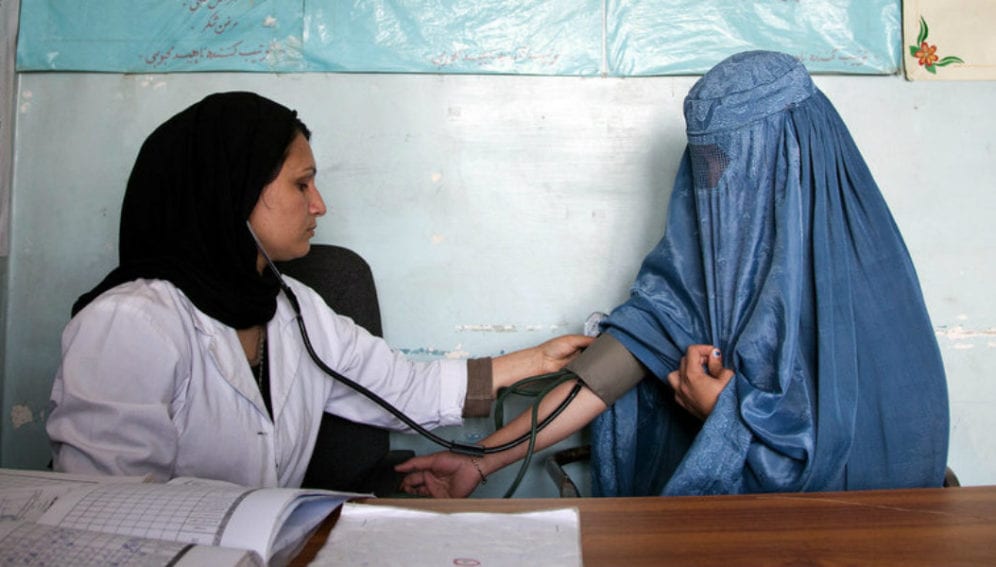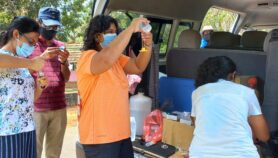Send to a friend
The details you provide on this page will not be used to send unsolicited email, and will not be sold to a 3rd party. See privacy policy.
Pseudoscientific practices and unfounded scare stories pull back South Asian nations from progress, says Nalaka Gunawardene.
Modern myths are undermining the quest to achieve a better quality of life for 1.6 billion people in these countries. They add a new layer of complexity in a region already under pressure from poverty, conflicts and disparities.
Fewer South Asians today believe in ghosts, spirits and other traditional ‘demons’ that frightened their ancestors. However, some new fears have emerged to fill that void.
These ‘twenty-first century demons’ come in various shapes and forms. They include half truths, misconceptions, complete fallacies and assorted conspiracy theories.
Increasingly such ‘demons’ come in the garb of pseudoscience: fanciful claims are presented as seemingly ‘technical’ or as part of ‘scientific dissent’. They exploit the benefit of the doubt. But careful probing shows most have no evidence base, and lack the rigour and self-correction processes inherent in real science. [1]
Yet, they spread fast, playing on insular and insecure minds and often thriving on low levels of public trust in authority. Uncritical and sensationalist media coverage often adds momentum.
Some fallacies are relatively harmless. But others can spread fear, reverse public health gains, and lead to policy paralysis. Health related ones are among the most persistent — and probably the most damaging to individuals and society.
Consider the many scare stories on chemical, nuclear and genetic topics circulating in South Asia’s mainstream media and social media. It is easy to invoke fears of cancer, and even the remotest (perceived) threat to human fertility causes panic.
"Those trained in empirical sciences should study the cultural and societal context in which myths and pseudoscience thrive"
Nalaka Gunawardene
Polio eradication
Take, for example, global efforts to eradicate polio. In early 2014, India completed three years without having a single case of wild poliovirus infection. It is one of the biggest public health success stories in recent years. [2]
India’s anti-polio campaign is rightfully hailed as a model. Yet, the ‘the last mile’ in states like Uttar Pradesh proved particularly difficult on the basis of religious beliefs, social class or the caste system. Persistence by the country’s public health officials finally paid off. But it reminds us that in infectious disease control, any system is as strong as its weakest link.
India’s lessons are invaluable for Afghanistan, Nigeria and Pakistan, the only three countries that remained polio-endemic by 2013. One key learning: eradication success depends on a clear understanding of each country’s context.
As a group of public health specialists noted in the Bulletin of the World Health Organisation in 2009: “There is no vaccine against resistance or refusals that are rooted in social-cultural, religious and political contexts… Medical approaches alone cannot address certain community concerns.” [3]
Tribalism, extremism and modern myths combine to hamper Pakistan’s anti-polio efforts. The Taliban has killed more than 15 polio workers during the past two years. [4] Courageous public health workers also have to counter rumours that vaccination is an attempt by government ‘to sterilise Muslims’. This belief is especially high in the country's northwest and border regions — where wild poliovirus is still found.
Fears of an ‘infertility plot’ have also prompted nearly a third of Pakistani households to avoid using iodised salt. With half the population (equal to 100 million) suffering from iodine deficiencies, this increases the risk of goitre, mental retardation, birth defects and other developmental problems. [5]
Pakistan’s experience illustrates how even the educated middle class can uncritically accept modern myths. As Pervez Hoodbhoy, Pakistani physicist and public intellectual, has noted: “Quack science does not just cost money. It also confuses people, engages them in bizarre conspiracy theories, and decreases society’s collective ability to make sensible decisions.” [6]
Ideological bias
India and Pakistan are not alone in this affliction. Across South Asia, peddlers of miracle healing and magical cancer cures openly promote their quick fixes on public television and online. Celebrities and politicians patronise such services, exasperating medical and public health professionals.
Well-meaning activists —- viewing problems through a narrow ideological lens —- can add to the corpus of dangerous myths. Some years ago a Lankan advocacy group promoting indigenous knowledge questioned the practice of disposable injection needles to guard against HIV. They saw it simply as a ruse by pharmaceutical industry to sell more.
More recently, radical environmental groups in Sri Lanka have accused multinational companies of attempting to ‘poison the nation’ through chemical fertilisers and pesticides.
Market manipulations and corrupt practices undoubtedly exist. Current development models are imperfect, and their pros and cons must be debated. But all-or-nothing positions do not help. In public health, careless rhetoric can lead to hasty policies that cost lives.
Those trained in empirical sciences should study the cultural and societal context in which myths and pseudoscience thrive. Public perceptions matter as they shape individual and group behaviour, which in turn influences policy choices.
American astronomer and science communicator Carl Sagan (1934—1996) used to argue that a healthy dose of scepticism could keep most ‘demons’ at bay while some deep-rooted ones require more systematic investigation.
Higher levels of literacy and education are not, by themselves, sufficient safeguards. In their 2012 book Ganesha on the Dashboard, V Raghunathan and M A Eswaran probed how, despite being educated, smart and tech-savvy, “Indians can be surprisingly unscientific in their daily lives”. [7]
As they noted, “Our refusal to see our lack of scientific temper as a serious issue inhibiting our development as a society is perhaps a South Asian trait, and not just an Indian one.”
Managing demons — old and new — thus becomes part of our development challenge.
Nalaka Gunawardene is a Colombo-based science writer, blogger and development communication consultant. He is also a trustee of SciDev.Net. The views in this column are his own.
References
[1] http://en.wikipedia.org/wiki/Pseudoscience
[2] India declares itself polio free. SciDev.Net 14 January 2014.
http://www.scidev.net/south-asia/health/news/india-declares-itself-polio-free.html
[3] Achieving polio eradication: a review of health communication evidence and lessons learned in India and Pakistan by Rafael Obregón, Ketan Chitnis, Chris Morry, Warren Feek, Jeffrey Bates, Michael Galway & Ellyn Ogden. Bulletin of the World Health Organization 2009; 87:624-630. http://www.who.int/bulletin/volumes/87/8/08-060863/en/
[4] Battling terrorism to eradicate polio. SciDev.Net 28 January 2014.
http://www.scidev.net/south-asia/health/multimedia/battling-terrorism-to-eradicate-polio-1.html
[5] Salt rumors add to health crisis in Pakistan. Washington Post, 31 Dec 2012. http://www.washingtonpost.com/world/asia_pacific/salt-rumors-add-to-health-crisis-in-pakistan/2012/12/30/bb5f5e48-4619-11e2-8c8f-fbebf7ccab4e_story.html
[6] Case of bogus science. By Pervez Hoodbhoy Dawn, Pakistan. 16 Nov 2010. http://www.dawn.com/news/582531/case-of-bogus-science
[7] Ganesha on the Dashboard, by V Raghunathan and M A Eswaran. Penguin Books, India. 2012.














